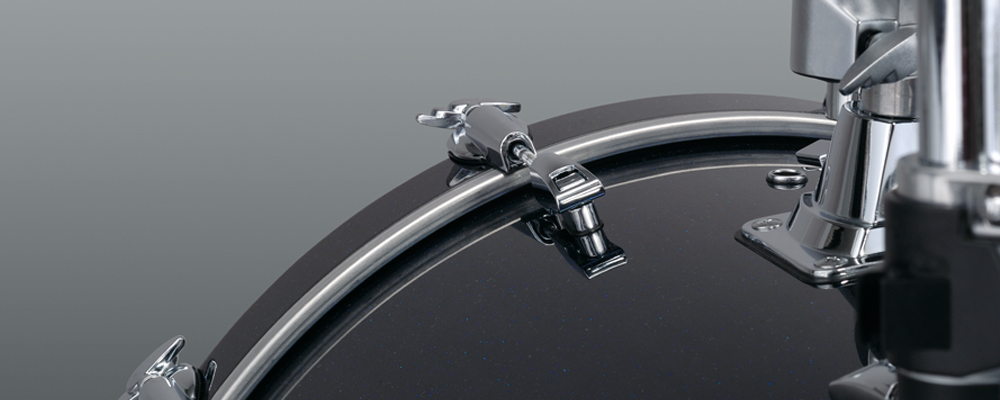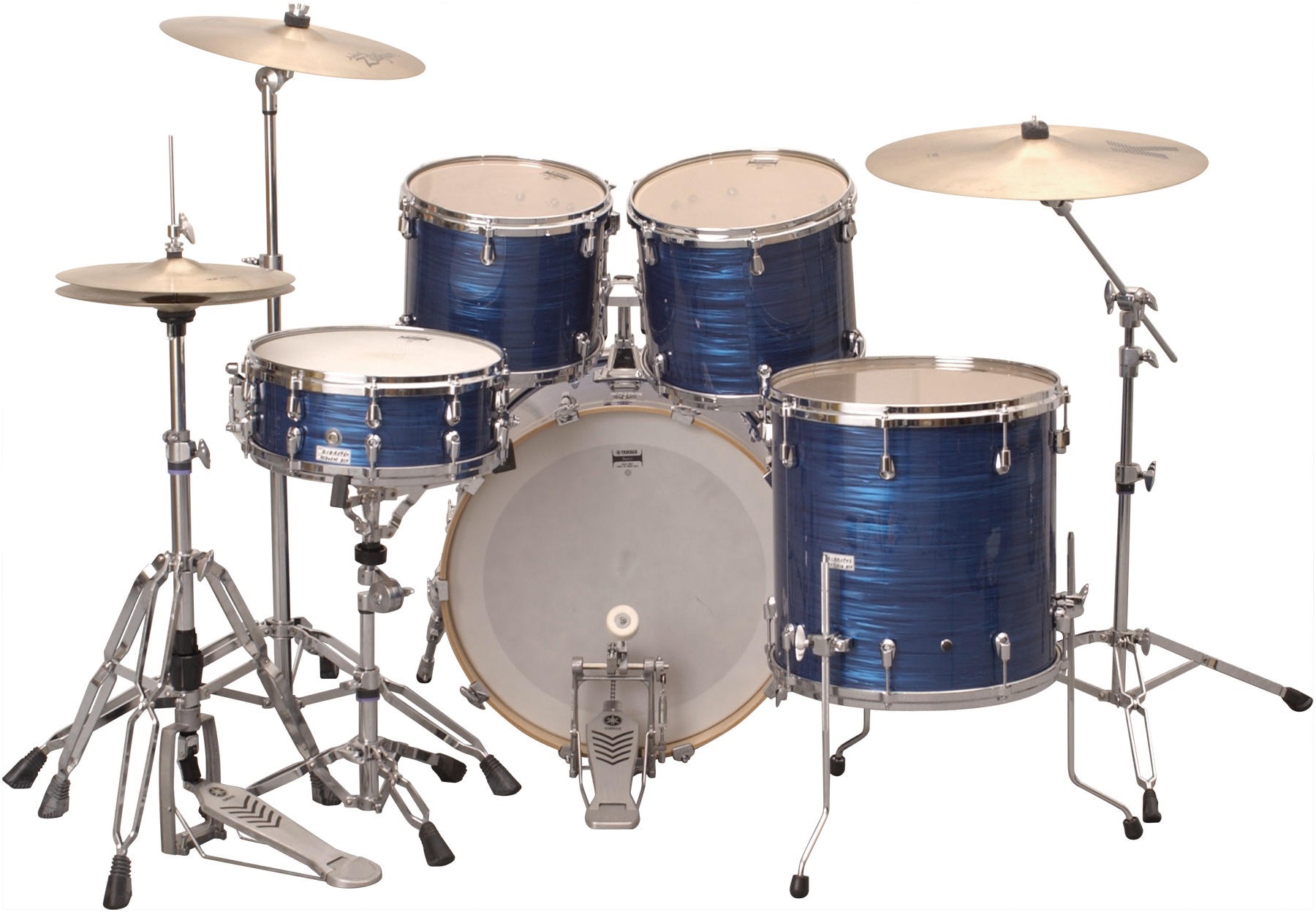The Structure of the Drum
The drum kit-a collection of percussion instruments
Any percussion instrument can be included, even tambourines and electronic drums
The drum kit, also called "the drums," is a group of percussion instruments arranged so that they can be played by one person. The basic drum kit is comprised of any number of other percussion instruments, but primarily of large and small drums and cymbals, with the special tonal qualities of each being used in a performance. The drum kit can easily be rearranged to suit a particular musical genre or sound, and so the number and types of percussion instruments included will vary from drummer to drummer. Some drummers use tambourines, cowbells, blocks, and other instruments for the special texture that they add, and some drummers even incorporate electronic drums.
In general, these are the basics
Though there is no original standard configuration for drum kits, drum kits have a five-piece set, including two tom-toms, a floor tom, a bass drum, and a snare drum. The floor tom is a tom-tom that has a stand or legs and sits on the floor. The bass drum creates a low sound and is played with the foot by stepping on a pedal. The snare drum is a shallow drum that most strongly expresses the individual style of a drummer. The basic cymbals include the large ride cymbal, the crash cymbal-which is used for accents-and the hi-hat, with its two stacked cymbals whose degree of separation can be controlled to prolong or shorten the sound of the cymbals.
A typical drum kit and the names of each part
Are there any rules for drum kit configurations?
In general, the drums are arranged in front of the drummer from left to right in order from the drum with the highest tone to that with the lowest. Because the tone of the drum is lower as the diameter increases, the drums get increasingly bigger from left to right as well.Originally, the biggest drum was the bass drum, but today, this is not usually the case.
Though the drums do not have a clear pitch, their range of tone sounds something like this.

- *The inches in the diagram indicate the diameter of the drum
- *1 inch = 2.54 centimeters
The tone of the cymbals will vary with their size, thickness, and taper. Thus, cymbals of the same size do not necessarily produce the same tone. For example, there are both high- and low-toned ride cymbals, and the tones of other cymbals are variously high and low as well. Cymbals are selected based on their applications, and personal taste.










